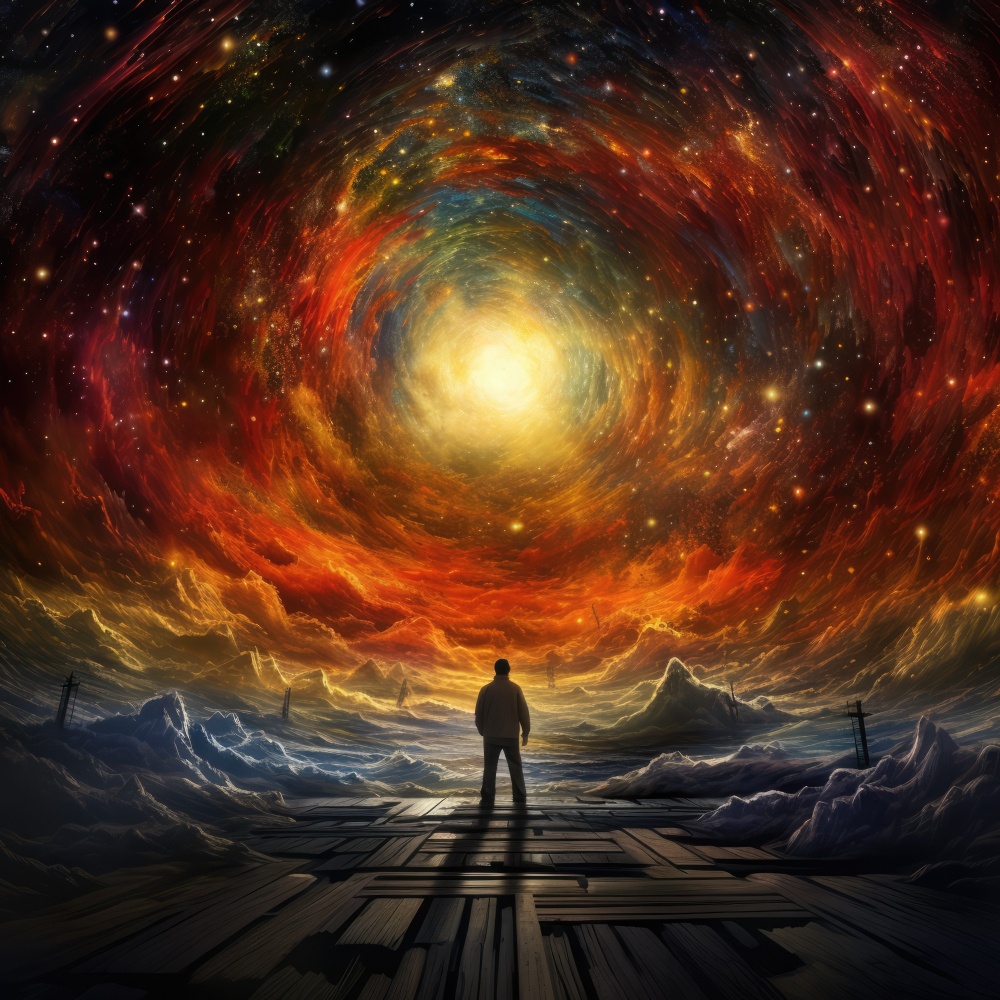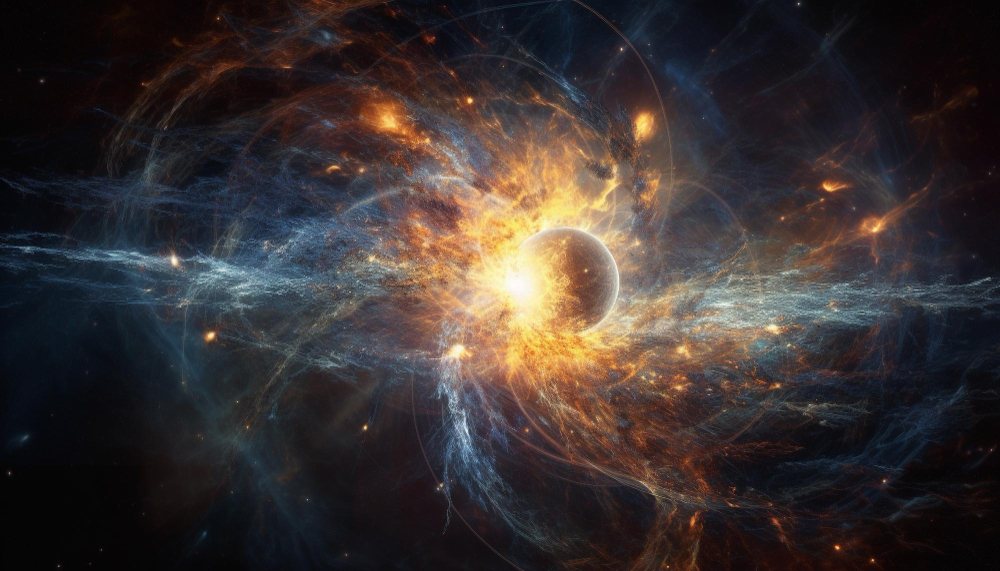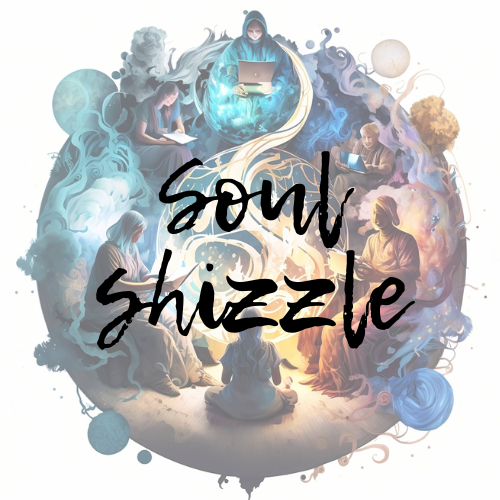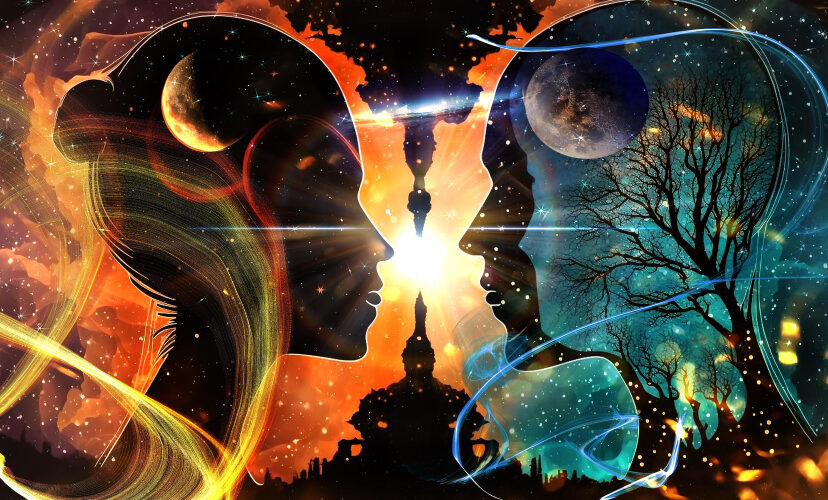Everything Is Connected: The Interwoven Web of Consciousness
Have you ever stood beneath a starlit sky and felt a profound sense of belonging? Or perhaps walked through a forest and sensed the silent communication between trees? These moments of connection aren’t just poetic imaginings—they’re glimpses into one of the universe’s fundamental truths: everything is connected.
This concept—that everything is connected—transcends being merely a spiritual belief or philosophical stance. It’s a reality echoed across disciplines, from quantum physics to indigenous wisdom traditions, from ecosystem science to consciousness studies. The web of connection runs through all aspects of existence, from the cosmic to the subatomic, weaving together a tapestry of relationships that define our reality.
When I first began exploring this idea years ago, it changed my entire worldview. I realized that no action exists in isolation, no thought disappears into the void, and no being stands completely separate from the whole. Understanding that everything is connected brings both profound responsibility and immense comfort. We’re never truly alone in this intricate dance of existence.
The Scientific Evidence for Universal Connection
Science has traditionally been viewed as a domain of separation—breaking things down into smaller and smaller parts to understand them. Yet paradoxically, the deeper scientists delve into reality’s building blocks, the more connection they discover.
Quantum Entanglement: The Universe’s Hidden Thread
If you’ve ever wondered how everything is connected at its most fundamental level, quantum physics offers a mind-bending answer. In the subatomic realm, particles that interact become “entangled,” creating an instant connection regardless of the distance between them.
Einstein called this phenomenon “spooky action at a distance,” and it troubled him deeply because it seemed to contradict our understanding of reality. When scientists measure one entangled particle, its partner instantaneously adopts complementary properties—even if they’re light-years apart. This suggests an invisible connection exists beyond our conventional understanding of space and time.
Dr. John Wheeler, the renowned physicist who coined the term “black hole,” proposed that everything is connected through what he called the “participatory universe”—where consciousness and physical reality are fundamentally intertwined. He suggested that the universe exists as a series of possibilities until it’s observed, implying that consciousness itself plays a role in shaping physical reality.
Systems Science: Networks Within Networks
Beyond the quantum realm, systems science reveals how everything is connected through complex networks of relationship and influence.
Take ecosystems, for instance. When wolves were reintroduced to Yellowstone National Park in 1995, scientists observed what ecologists call “trophic cascades”—chains of effects rippling through the entire ecosystem. The wolves reduced elk populations, which allowed aspen and willow trees to regenerate, which stabilized riverbanks and created habitat for beavers, which built dams that created wetlands for fish and amphibians. Even the physical geography of the park changed as erosion patterns shifted.
This real-world example demonstrates how everything is connected in ways we can barely comprehend. Pull one thread, and the entire tapestry shifts.
Our bodies operate through similar interconnected systems. The gut microbiome—trillions of bacteria living in our digestive tract—communicates with our brain through the vagus nerve, influencing our mood, immune function, and even cognitive abilities. The relatively new field of psychoneuroimmunology studies how our thoughts and emotions affect our physical health through complex feedback loops between our nervous, endocrine, and immune systems.
These scientific insights reveal that separation is more illusion than reality. As the environmentalist John Muir once wrote, “When we try to pick out anything by itself, we find it hitched to everything else in the universe.”

Ancient Wisdom: Everything Is Connected in Spiritual Traditions
Long before modern science discovered these connections, spiritual traditions worldwide recognized that everything is connected through a unified field of consciousness or energy.
Indigenous Wisdom: The Web of Life
Indigenous cultures across continents share a core understanding that everything is connected through a sacred web of relationships. The Lakota phrase “Mitákuye Oyás’iŋ” (All Are Related) expresses this worldview, acknowledging kinship with all forms of life.
In Australia, Aboriginal Dreamtime stories describe how all beings, landforms, and natural phenomena are interconnected through eternal, ever-present spiritual forces. These traditions didn’t separate humans from nature but recognized them as integrated parts of a living whole.
I once spoke with an elder from the Haida nation who explained their traditional understanding of forests: “The trees aren’t just standing there. They’re talking to each other through their roots. They share nutrients, warn each other of danger, and support the young ones. We’ve always known what your scientists are just now discovering—everything is connected in the forest.”
Eastern Philosophies: The Illusion of Separation
In Hindu philosophy, the concept of “Advaita” (non-duality) teaches that our individual consciousness (Atman) is fundamentally identical to universal consciousness (Brahman). The perception of separation is maya—an illusion created by the mind.
Buddhism extends this understanding through the principle of “dependent origination” (pratītyasamutpāda), which explains how everything is connected through chains of cause and effect. Nothing exists independently; all phenomena arise in dependence on multiple conditions.
The Buddhist teacher Thich Nhat Hanh beautifully expressed this interconnection through his concept of “interbeing”: “If you are a poet, you will see clearly that there is a cloud floating in this sheet of paper. Without a cloud, there will be no rain; without rain, the trees cannot grow; and without trees, we cannot make paper.”
Western Mystical Traditions: The Unity of All Things
Western mystical traditions also recognize how everything is connected. The medieval Christian mystic Meister Eckhart wrote, “All creatures are interconnected and are mutually cause of one another’s coming into being.” Jewish Kabbalah describes the universe as a unified whole in which divine energy flows through interconnected spheres of existence.
The Hermetic principle “As above, so below” suggests patterns repeat across different scales of reality, connecting microcosm and macrocosm. This idea resonates with modern scientific concepts like fractal geometry, where similar patterns recur at progressively smaller scales.
The Interconnected Mind: How Our Thoughts Shape Reality
Perhaps the most profound aspect of connection is how our consciousness interacts with the world around us. If everything is connected, then our thoughts and emotions aren’t isolated within our skulls—they’re participants in the greater field of consciousness.
The Field of Consciousness
Research into collective consciousness suggests our minds may be connected in ways that transcend ordinary understanding. The Global Consciousness Project, run by scientists from Princeton University and other institutions, has monitored a global network of random number generators since 1998. Their data shows statistically significant deviations from expected randomness during major world events that capture collective attention—suggesting human consciousness can influence matter in subtle but measurable ways.
Similar studies on meditation’s effects on crime rates, dubbed the “Maharishi Effect,” have shown that when a critical mass of people practice meditation together, crime and violence in surrounding areas decrease significantly. While correlation doesn’t prove causation, these patterns suggest everything is connected through fields of consciousness that extend beyond individual minds.
The Emotional Contagion
On a more observable level, emotions spread through social networks like ripples in a pond. One person’s mood can influence others up to three degrees of separation away—affecting not just friends but friends of friends of friends. This emotional contagion operates partly through subtle facial expressions, body language, and tone of voice, but may also involve more subtle energetic exchanges we’re only beginning to understand.
When you cultivate joy, compassion, or peace within yourself, you’re not just changing your own experience—you’re contributing to the emotional climate of everyone around you. This understanding that everything is connected transforms personal growth from a self-centered pursuit into a service to the collective.
Living in Harmony with Connection
Recognizing that everything is connected carries profound implications for how we live. When we understand our inherent interconnection, we naturally align our actions with the welfare of the whole.
Ecological Consciousness: Honoring Our Place in Nature’s Web
Once we truly grasp that everything is connected, environmental destruction becomes unthinkable—like cutting off our own limbs. Indigenous cultures that maintained this awareness for millennia lived sustainably within their ecosystems, taking only what they needed and giving back through ceremonies and careful tending of the land.
Modern sustainability efforts are gradually rediscovering this wisdom. Permaculture design, for instance, works with nature’s interconnected systems rather than against them. By observing how elements in natural ecosystems support each other, permaculturists create human habitats that mimic these mutually beneficial relationships.
Even in urban environments, we can reconnect with these natural cycles. Growing food, composting kitchen waste, or simply spending time observing nature helps us remember our place in the web of life. These aren’t just “green” habits—they’re practices that restore our awareness that everything is connected.
Conscious Relationships: Mirrors of Our Interconnection
Our relationships offer powerful arenas to experience how everything is connected. Each person we encounter reflects aspects of ourselves, providing opportunities for growth and deeper understanding.
Conflict often arises from forgetting our fundamental connection. When we perceive others as separate from ourselves, we more easily judge, criticize, or dismiss them. But when we remember that everything is connected—that we are them and they are us at some deeper level—compassion naturally arises.
This doesn’t mean ignoring differences or avoiding healthy boundaries. Rather, it means recognizing that beneath our diverse expressions lies a common essence. As Martin Luther King Jr. said, “We are caught in an inescapable network of mutuality, tied in a single garment of destiny.”
The Ripple Effect: Small Actions, Big Impact
Understanding that everything is connected helps us appreciate how our smallest choices create ripples throughout the system. The butterfly effect—where tiny initial changes can lead to enormous differences in outcomes—applies to human actions as well as weather patterns.
A single act of kindness can trigger a chain reaction, inspiring others to act compassionately in turn. Similarly, a moment of mindfulness might prevent a reactive comment that would otherwise spiral into conflict. When we recognize these interconnections, we become more thoughtful about our actions and their extended consequences.
I once watched a documentary about a man who started picking up trash on his daily walk. Neighbors noticed, then joined him, which inspired community clean-up events, which eventually led to local policy changes about waste management. One person’s simple action catalyzed systemic change because everything is connected.

Practical Ways to Deepen Your Connection
If you’re inspired to live more aligned with the truth that everything is connected, here are some practices to consider:
Mindful Awareness: The Gateway to Connection
Mindfulness—paying attention to the present moment without judgment—helps us perceive connections we might otherwise miss. Through regular meditation or simply bringing awareness to everyday activities, we can observe how our thoughts influence our emotions, how our emotions affect our bodies, and how our presence impacts others.
Try this simple exercise: For one full day, notice the effects of your interactions. How does your mood shift after speaking with different people? How do others respond to your energy? These observations reveal the subtle web of influence that connects us all.
Nature Immersion: Remembering Our Place in the Web
Spending time in natural settings helps us feel how everything is connected more directly than intellectual understanding alone. Forest bathing (shinrin-yoku), the Japanese practice of immersing oneself in forest atmospheres, has been shown to reduce stress hormones, lower blood pressure, and improve immune function.
When you’re in nature, try this: Close your eyes and imagine the invisible connections between yourself and your surroundings. Feel the oxygen from plants entering your lungs, the microorganisms in the soil beneath your feet, the sunlight that powers the entire system. This isn’t just poetic imagination—it’s acknowledging real relationships that sustain your life.
Conscious Consumption: Recognizing the Stories Behind Things
Every product we use connects us to people and places worldwide. Before purchasing something, consider: Who made this? Under what conditions? What resources were used? What will happen when I’m done with it?
This awareness doesn’t have to be overwhelming. Start with one category—perhaps food or clothing—and explore its connections. You might discover that supporting local farmers or fair-trade artisans feels more aligned with your understanding that everything is connected.
Energy Awareness: Managing Your Contribution to the Field
Since everything is connected energetically, the quality of energy we cultivate matters. Notice how different activities, environments, and relationships affect your energetic state. Do certain news sources leave you feeling depleted? Do particular people or places energize you?
Practices like yoga, qigong, or tai chi help sensitize us to subtle energy and give us tools to maintain balance. Even simple breathing techniques can shift your energy, affecting both your own wellbeing and your impact on the collective field.
The Personal Journey: From Separation to Connection
Embracing the truth that everything is connected often unfolds as a personal journey from isolation to belonging, from fragmentation to wholeness. This shift doesn’t happen overnight—it’s a continual awakening.
Many of us were raised in cultures that emphasize individuality and competition. We learned to see ourselves as separate entities pursuing personal goals. This worldview has driven remarkable achievements but also created profound disconnection—from nature, from each other, and from parts of ourselves.
The journey back to connection often begins with moments of insight—perhaps while gazing at stars, witnessing birth or death, or in states of deep meditation. These glimpses of unity can inspire us to question our assumptions about separation and seek a more connected way of being.
As we progress on this path, we typically move through several phases:
First comes intellectual understanding—learning about interconnection through science, philosophy, or spiritual teachings. This knowledge is valuable but limited.
Next comes experiential knowing—directly feeling our connection through practices like meditation, nature immersion, or profound relationships. These experiences move understanding from head to heart.
Finally comes embodied living—allowing the truth that everything is connected to inform our daily choices, relationships, and purpose. This integration transforms our entire way of being in the world.
The Awakening to Connection
As humanity faces unprecedented challenges—climate change, social division, and technological disruption—recognizing that everything is connected becomes not just spiritually meaningful but practically essential. Our solutions must honor the web of relationships that sustains all life.
The good news is that this awakening seems to be accelerating. More people are recognizing the limitations of seeing the world through the lens of separation. Scientists, spiritual teachers, activists, and ordinary citizens are finding common ground in the understanding that everything is connected.
This shift in consciousness might be our greatest hope. As we remember our place in the interconnected web of life, we naturally act with greater care toward ourselves, each other, and the living planet that sustains us.
Everything is connected—this isn’t just a poetic notion or spiritual concept. It’s the fundamental reality of our existence, supported by cutting-edge science and ancient wisdom alike. When we align our lives with this truth, we discover not only greater harmony and purpose but also practical solutions to our most pressing problems.
The next time you look up at the stars or walk through a forest, remember: you’re not just observing connection—you’re participating in it. Every thought, word, and action ripples through the web of relationships that makes up our world. In this vast, interconnected system, you matter more than you know.
Everything is connected. And so are you.
We may earn a commission for purchases made using our links. Please see our disclosure to learn more.




